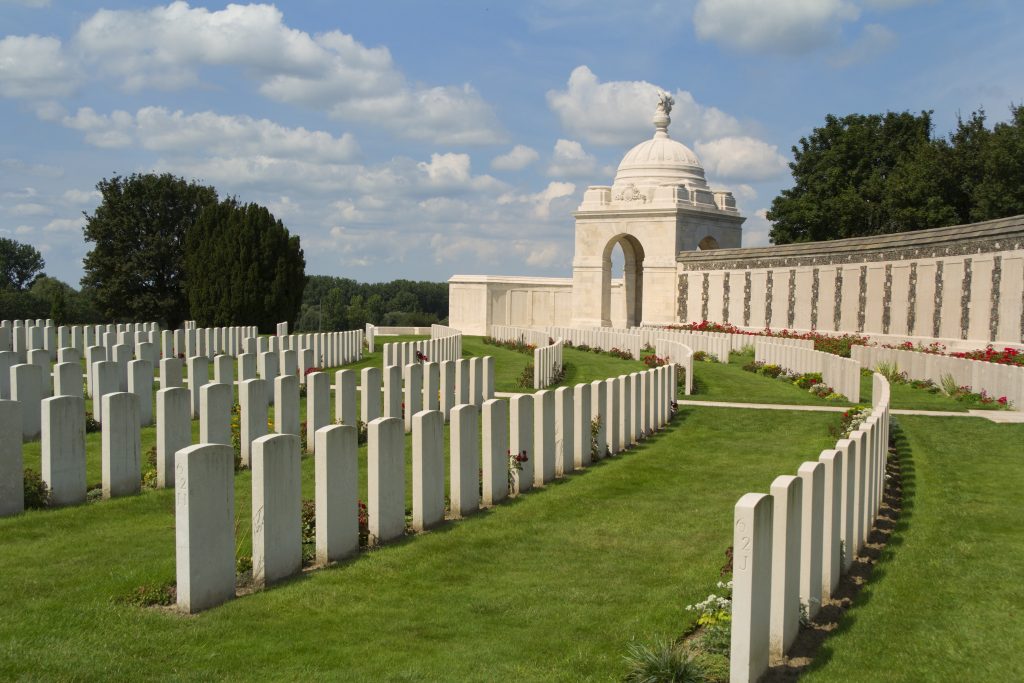I was planning on writing about Grube Messel (Pit Messel in English). I still will, but not today. I started reading the newspaper and my Facebook posts and got upset.
Today, we are remembering the end of the First World War one hundred years ago. A very important event. In the First World War, Belgium was almost completely taken over by the Germans, except for a small area around Ypres. A smart man had opened the locks of the Yser river, flooding the region and, as a result, stopping the Germans. The Yser river became the front line until the end of the War in 1918.
Although I did not grow up in this region, I know its memorials and stories pretty well, mostly because I am close or bettet, became very close with my grandmother through all her childhood memories and stories about the war she lived through (the Second World War) and the war her parents lived through (the First World War). I used to take her on a trip to visit all the memorials once a year. Something I now do with foreign friends if I get the change.
My first stop always is the German War Cemetery in Vladslo, with its beautiful statues of Käthe Kollwitz: the Grieving Parents.

Next stop is the Dodengang, the Trench of Death. It is a 270 m section of preserved trenches with a little museum next to it.
After that, I drive to the Yser Tower and I tell my guests about the awakening of the Flemish Movement through de Groote Oorlog.
Then, it is off to Tyne Cot, its full name being Tyne Cot Commonwealth War Graves Cemetery and Memorial to the Missing. Yes, another cemetery. One of many, many, many English cemeteries in the region, but a very impressive one.

Since a couple of years, I have added the Sanctuary Wood Museum Hill 62 to my tour (but don’t take your kids). This is by far the weirdest museum I know. It was started by the farmer who came back to his land after the war, leaving it as he had found it, adding collectables over the years. It lacks all the delicate touches of educators and curators and is, as a result, dusty and gloomy, leaving you a very good impression on what war is: gruesome.
If you rather have a clear overview on how the War started, developed and ended, head to the excellent museum In Flanders Fields. This museum does an excellent job in showing how many lives were wasted in this horrible war.
After all that misery, I give my guests beer and French fries on the completely rebuilt (and beautiful) medieval market of Ypres. And with a full belly, I take them to the grand finale: the Menin Gate. This is a building, a memorial, opened in July 1927, bearing the names of 54,395 of missing soldiers. Every night at 8pm sharp, two police men stop all traffic and the Last Post is played, commemorating all the soldiers who gave their lifes. On a normal weekday (not like today: see the Guardian ), it does not last very long, but it still send a powerful message: NEVER AGAIN.
And yet, on November, 7th, a proces has started in Belgium accusing six people of human trafficing, because they helped out migrants. These people were members of the Civilian Platform Supporting Refugees, helping out stranded refugees (often minors) in a park in Brussels with food and a safe place to stay. Now, they are penalized for their solidarity.
So, what exactly are we remembering today? A hundred years later. That so many people died in vain? In a senseless war, as all wars are? Is that it? Just to go back tomorrow to the new normal of not seeing people in need, but illegals and criminals and possible threats. Wasn’t it thinking in terms of friends and foes what leaded to the Great War to begin with? Do we honestly need war again to understand that in the light of death, we are all the same? These are frightening times when even our governments are penalizing the only thing that can save us and our democracies from ourselves: SOLIDARITY.
